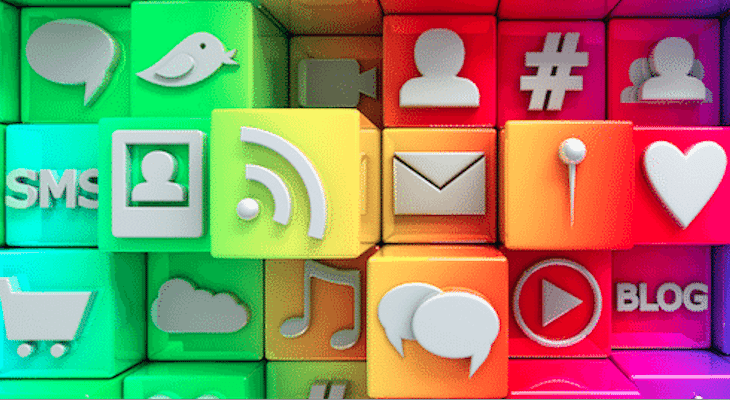Can you believe that we’re about to say hello to 2022? Feels like it was just yesterday that we were talking about the digital marketing trends to look out for in 2021.
The global pandemic has changed not only our way of living and communicating, but how we operate businesses as well. With thousands and thousands of companies shifting online since 2020, the digital world has become more crowded than ever. For sure, we won’t see it stopping anytime soon.
- How Covid-19 changed marketing
While marketing has fundamentally changed, the objectives remain the same: Increase brand awareness, generate and convert leads, and ultimately grow and scale our businesses.
- “Digital-first” approach
Today, it’s more important than ever for businesses to develop a “digital-first” approach to their marketing strategies. This is especially true for those that have been most impacted by the outbreak.
- Virtual events
With the shift in consumer behavior to a digital landscape, online events and webinars are here to stay.
- SEO
Unfortunately, many companies won’t be able to withstand the pandemic, but for those that do, customers will want to check online and confirm that they are still open before venturing out in public.
Lots of new businesses will pop up, and customers will want to search and discover the ones that are worth checking out in person, hence the crucial importance of SEO, local SEO, and paid search.
- Digital advertising
Because of the way people shop nowadays, there is a higher focus on product features, specifications, and price. And, with the consumer behavior shift online likely to remain post-COVID, marketers now have to focus more on advertising the right messages on the right channels.
- Social media
More and more people are now on social media are now more intimately familiar with the different social media platforms, including Instagram, TikTok, Facebook, and more – all of which have experienced a massive increase in usage.
All of this has led to a higher focus on building and maintaining strong customer relationships, and marketers are looking for ways for more efficient and effective communication with their audience.
What did marketers learn in 2021?
Go through any list of marketing predictions for 2021. You’ll notice that not all of them actually came into fruition. No matter how insightful the marketer may be, accurately forecasting marketing trends in the middle of a pandemic is just too impossible.
While many predictions did come true, we’ve also seen some trends that never crossed our minds. And, we’d love nothing more than to share them with you.
So, what marketing lessons did 2021 teach us? Let’s have a closer look at them below.
- Digital transformation continues to grow.
Digital transformation refers to how a company uses technology, people, and processes to provide value to its customers.
The drastic drop in in-person interactions have led companies to invest heavily in digital solutions including chat bots, artificial intelligence, e-commerce, apps, virtual reality and more.
- Webinars and live videos have taken over.
2020 ushered in the era of Zoom, live webinars and online-only events. While the move may have initially been spurred by the need to restrict in-person interactions, there’s a reason video-based communication is sticking around: It’s a cost-effective, relatively quick medium for spreading messages and educating audiences.
- Internet sales skyrocketed.
Even though stay-at-home orders were slowly lifted and many businesses reopened this year, consumers would still shop online. In fact, online sales reached a new high in February 2021 at 19.4%, a leap from last year’s 13.5% record.
- Brands have become more inclusive.
With racial tensions rising since the summer of 2020, many brands have since decided to take a stand by incorporating inclusive marketing into their advertising efforts. Research revealed that around 68% of consumers expect brands to be clear about their values, which is why we won’t be seeing this trend fading soon.
- Video reigns supreme.
It’s no surprise that video remains the superstar when it comes to content. Marketing experts agree that video content will always perform better than written copy. A 2021 Wyzowl Video Survey found that 93% of marketers believe that video is an essential part of their marketing strategy — the highest percentage since 2015.
The live streaming market is huge and continues to grow because it’s effective. Ninety-four percent of marketers believe video content was useful for explaining a product or service and 87% said video content helped them drive traffic to a website. The great thing is that you can stream wherever you are. Other perks? Almost everyone has access to channels that have live streaming, the learning curve isn’t too steep and really all you need is a smartphone.
Video content that’s viral and promoted properly can garner lots of comments and shares, indirectly establishing trust with viewers. Unlike regular ad campaigns, which are focused on sales, campaigns using user-generated content are based on honesty and sincerity. Staying abreast of trends, whether it be TikTok videos or interactive stories via virtual reality technology, will help you stay ahead of the pack.
- Marketing automation isn’t going anywhere.
Especially as we’re now in the age where almost everything’s done digitally, businesses need to adopt marketing automation to streamline their marketing efforts. And, so far, we’ve seen companies of all sizes getting into it. Automated messages across channels including email, web, social and text can help with lead generation and measuring overall ROI on campaigns. Machine learning and AI allow businesses to collect information about their audience and buyers to craft more effective campaigns. Other trends include chat bots and personalized communications.
And it impacts the bottom line: Automated processes can lead to a 14.5% increase in sales productivity and 12.2% reduction in marketing overhead. These processes also help reduce human error and repetitive workloads.
Concluding thoughts
While businesses and marketers are still trying to recover from the impact of the pandemic, it’s safe to say that they’re gradually going to the right direction. As more of the economy prepares to open its doors, anyone accustomed to the way of the past should get themselves ready for the adjustment period.






